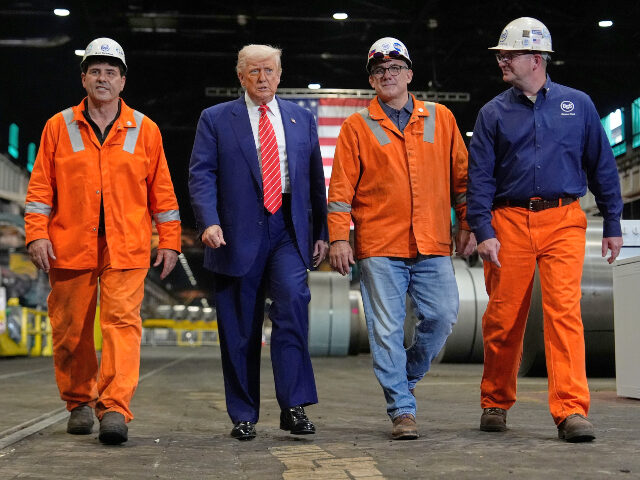Donald Trump Leaves Steel Tariffs at 25% for U.K. While Rest of World Faces 50% Duty

President Donald Trump has not doubled tariffs on steel imports from the United Kingdom despite raising them to 50 percent for countries around the world, signifying the president is willing to reward those who work with him.
Last week, Trump announced a tariff hike on virtually every nation’s steel exports during a rally in West Mifflin, Pennsylvania, around keeping the famed U.S. Steel Corporation in the United States.
“At 25 percent, they can sort of get over that fence. At 50 percent, they can no longer get over the fence,” Trump said.
The tariffs took effect Wednesday.
By exempting Britain, Trump seems to be sending a message to the rest of the world that countries that work with the United States on trade will be rewarded. During a phone call that the press were let in on in May, Trump and British Prime Minister Keir Starmer announced the nations had come to a major trade agreement. It marked the first such agreement the administration reached with another nation.
While Starmer will likely tout this as a big achievement, the U.K. steel industry has been substantially hollowed out over the past 50 years. The U.K. churned out 28.3 million tonnes of steel in 1970, but the number dwindled to 17.8 million by 1990, the House of Commons Library shows. By 2010, it was producing 9.7 million tonnes of steel annually and hit a historic low in 2023, manufacturing just 5.6 million tonnes, UKSteel.org notes:
UK production in 2022 had already marked the lowest level since the Great Depression, but in 2023 it dropped by a further 6%, while demand fell by 14% on year.
All this while the import penetration in the UK market has continued to increase. In 2023, net imports stood at 4.6Mt claiming a 60% import share up from 55% the year prior. While overall imports fell in absolute terms by 5%, volumes increased from Asian origins, notably India and Vietnam, as well as France, all of which benefit from much lower electricity costs. Weak demand in China is also having knock-on effects on wider trade flows from Asia.
In a way, Trump is attempting to avoid the same fate Britain has seen by implementing his tariff policies.